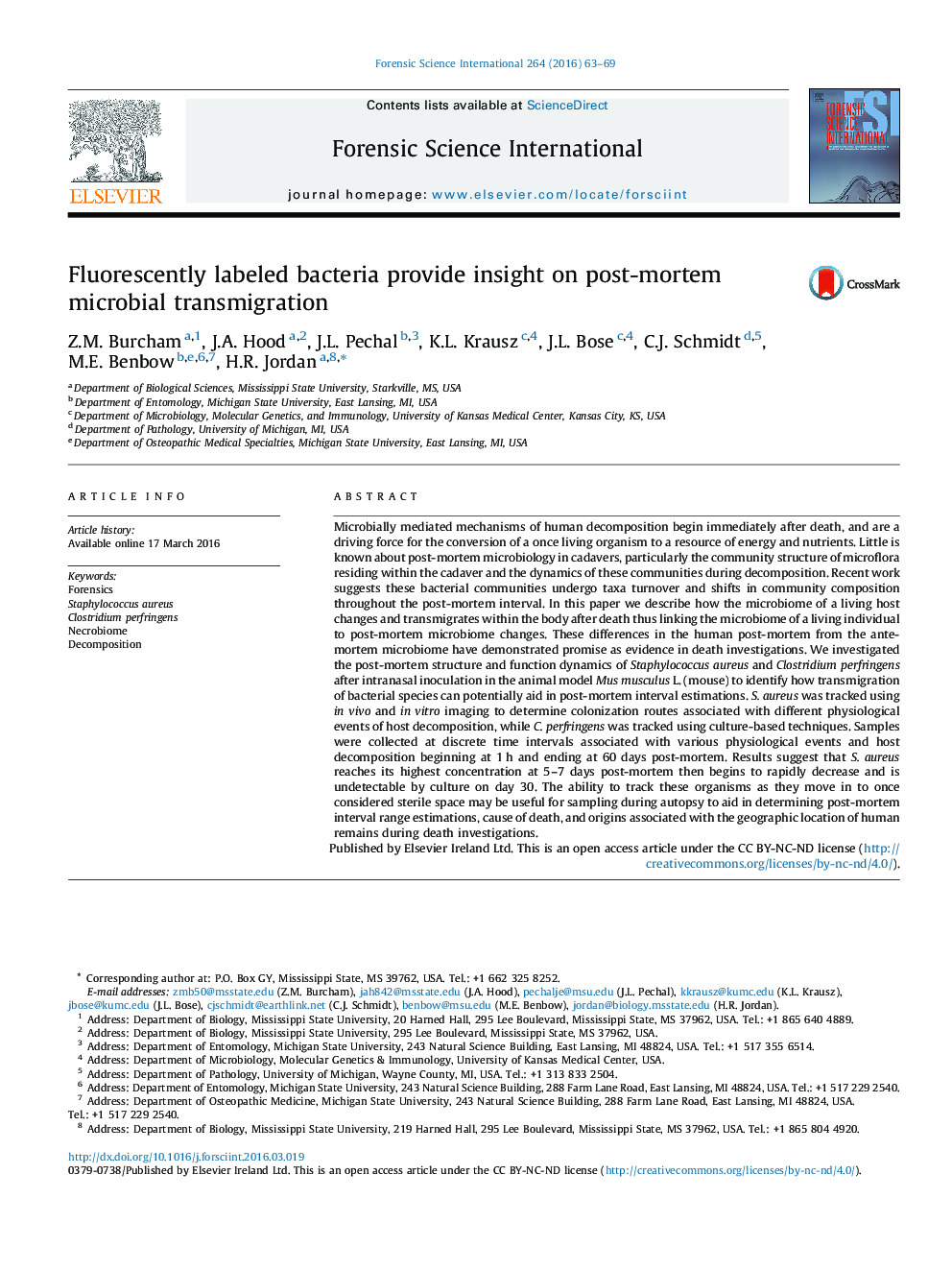| کد مقاله | کد نشریه | سال انتشار | مقاله انگلیسی | نسخه تمام متن |
|---|---|---|---|---|
| 6551809 | 160416 | 2016 | 7 صفحه PDF | دانلود رایگان |
عنوان انگلیسی مقاله ISI
Fluorescently labeled bacteria provide insight on post-mortem microbial transmigration
ترجمه فارسی عنوان
باکتری های فلورسنتز شده برچسبگذاری بینش در انتقال مهاجرت پس از مرگ را فراهم می کنند
دانلود مقاله + سفارش ترجمه
دانلود مقاله ISI انگلیسی
رایگان برای ایرانیان
کلمات کلیدی
موضوعات مرتبط
مهندسی و علوم پایه
شیمی
شیمی آنالیزی یا شیمی تجزیه
چکیده انگلیسی
Microbially mediated mechanisms of human decomposition begin immediately after death, and are a driving force for the conversion of a once living organism to a resource of energy and nutrients. Little is known about post-mortem microbiology in cadavers, particularly the community structure of microflora residing within the cadaver and the dynamics of these communities during decomposition. Recent work suggests these bacterial communities undergo taxa turnover and shifts in community composition throughout the post-mortem interval. In this paper we describe how the microbiome of a living host changes and transmigrates within the body after death thus linking the microbiome of a living individual to post-mortem microbiome changes. These differences in the human post-mortem from the ante-mortem microbiome have demonstrated promise as evidence in death investigations. We investigated the post-mortem structure and function dynamics of Staphylococcus aureus and Clostridium perfringens after intranasal inoculation in the animal model Mus musculus L. (mouse) to identify how transmigration of bacterial species can potentially aid in post-mortem interval estimations. S. aureus was tracked using in vivo and in vitro imaging to determine colonization routes associated with different physiological events of host decomposition, while C. perfringens was tracked using culture-based techniques. Samples were collected at discrete time intervals associated with various physiological events and host decomposition beginning at 1Â h and ending at 60 days post-mortem. Results suggest that S. aureus reaches its highest concentration at 5-7 days post-mortem then begins to rapidly decrease and is undetectable by culture on day 30. The ability to track these organisms as they move in to once considered sterile space may be useful for sampling during autopsy to aid in determining post-mortem interval range estimations, cause of death, and origins associated with the geographic location of human remains during death investigations.
ناشر
Database: Elsevier - ScienceDirect (ساینس دایرکت)
Journal: Forensic Science International - Volume 264, July 2016, Pages 63-69
Journal: Forensic Science International - Volume 264, July 2016, Pages 63-69
نویسندگان
Z.M. Burcham, J.A. Hood, J.L. Pechal, K.L. Krausz, J.L. Bose, C.J. Schmidt, M.E. Benbow, H.R. Jordan,
